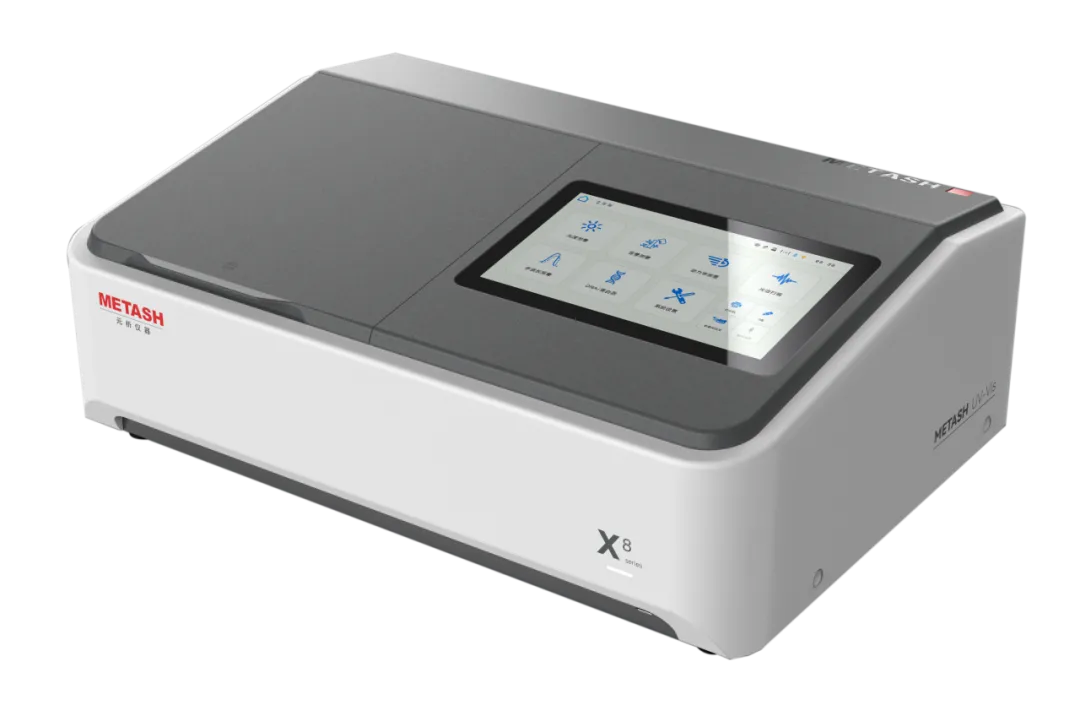- This topic is empty.
-
AuthorPosts
-
2025-09-04 at 4:39 pm #7625
The double beam spectrophotometer is a cornerstone instrument in analytical chemistry, pharmaceutical research, and life sciences. Unlike its single-beam counterpart, this device splits a beam of light into two paths—one passes through the sample while the other goes through a reference. This design minimizes errors caused by fluctuations in light intensity, providing higher accuracy and reliability. The innovation of this optical arrangement has made the double beam spectrophotometer for analytical use indispensable in laboratories worldwide. In this blog post, Metash, a high quality laboratory analysis equipment manufacturing factory, will share the role of double beam UV visible spectrophotometer for analytical use.
Why the Double Beam Spectrophotometer Matters in Analytical Use?
When scientists discuss precision and reproducibility in data collection, the double beam spectrophotometer for analytical use frequently comes to mind. Its ability to continuously compare a reference beam against a sample beam ensures that changes in lamp intensity or electronic drift do not compromise results. This capability makes the instrument particularly valuable for:
* Detecting trace substances in complex mixtures.
* Monitoring chemical reaction kinetics.
* Ensuring regulatory compliance in pharmaceutical testing.
Thus, laboratories that demand rigorous quality control increasingly rely on this technology as a foundation for accurate data interpretation.

Exploring the Double Beam UV Visible Spectrophotometer
A specialized form of this instrument is the Double Beam UV Visible Spectrophotometer, designed to measure absorbance and transmittance in the ultraviolet and visible light spectrum. This range, typically spanning 190 to 1100 nanometers, is crucial for studying nucleic acids, proteins, and a wide array of organic and inorganic compounds. In clinical diagnostics, environmental analysis, and material testing, the Double Beam UV Visible Spectrophotometer provides a window into molecular structure and concentration, enabling researchers to move beyond simple qualitative assessment into robust quantitative analysis.
Historical Development and Evolution
The concept of spectrophotometry dates back more than a century, but early instruments were bulky and prone to error. The development of the double beam spectrophotometer was a turning point. By simultaneously measuring sample and reference, scientists could cancel out variables that plagued earlier methods. Over time, these instruments have evolved from manually operated systems to highly automated, software-integrated devices with capabilities such as data storage, spectral scanning, and real-time monitoring. This evolution reflects the growing demand for efficiency and reliability in scientific research.
Applications Beyond the Laboratory
Although the double beam spectrophotometer for analytical use is typically associated with research labs, its impact extends into diverse industries:
* Pharmaceutical manufacturing: Ensuring drug formulations meet precise concentration standards.
* Environmental science: Monitoring pollutants in air, water, and soil.
* Food and beverage industry: Assessing additives, colorants, and nutritional content.
* Forensic science: Identifying unknown substances in criminal investigations.
Each of these applications underscores how the Double Beam UV Visible Spectrophotometer transcends its role as a simple instrument, becoming an essential component of industrial and regulatory ecosystems.
Double Beam Spectrophotometer vs. Single Beam Instruments
A natural question arises: why not use a single-beam spectrophotometer? The answer lies in stability and efficiency. Single-beam systems require recalibration for each measurement, which can be time-consuming and susceptible to error. In contrast, a double beam spectrophotometer continuously compensates for fluctuations in light source or detector sensitivity, producing more reliable outcomes with less manual intervention. For laboratories conducting large volumes of tests, the time saved and data integrity gained justify the investment in double beam systems.
Integration with Digital Technology
Modern Double Beam UV Visible Spectrophotometers are no longer stand-alone instruments. They integrate seamlessly with digital platforms, enabling remote monitoring, automated data analysis, and compliance with regulatory frameworks like GLP (Good Laboratory Practice). Connectivity to laboratory information management systems (LIMS) ensures traceability, while advanced software tools allow for spectral overlays, derivative analysis, and customizable reporting. These digital enhancements demonstrate how the double beam spectrophotometer continues to adapt to the changing needs of science and industry.
Choosing the Right Double Beam Spectrophotometer
With a wide range of models available, selecting the right instrument requires careful consideration. Factors such as wavelength range, resolution, photometric accuracy, and software compatibility all play a role. A Double Beam UV Visible Spectrophotometer may be ideal for molecular biology labs, while a more general-purpose double beam spectrophotometer might serve educational institutions or industrial facilities better. Matching instrument capabilities with application needs ensures efficiency, cost-effectiveness, and long-term usability.
Conclusion
The double beam spectrophotometer stands as a testament to the pursuit of accuracy and reliability in scientific analysis. Whether used in pharmaceutical quality control, environmental assessment, or advanced molecular research, this instrument bridges the gap between theory and measurable reality. As technology advances, the double beam spectrophotometer for analytical use and its specialized counterpart, the Double Beam UV Visible Spectrophotometer, will continue to empower researchers and industries with insights that shape innovation, safety, and progress.
http://www.metashcorp.com
METASH -
AuthorPosts
- You must be logged in to reply to this topic.